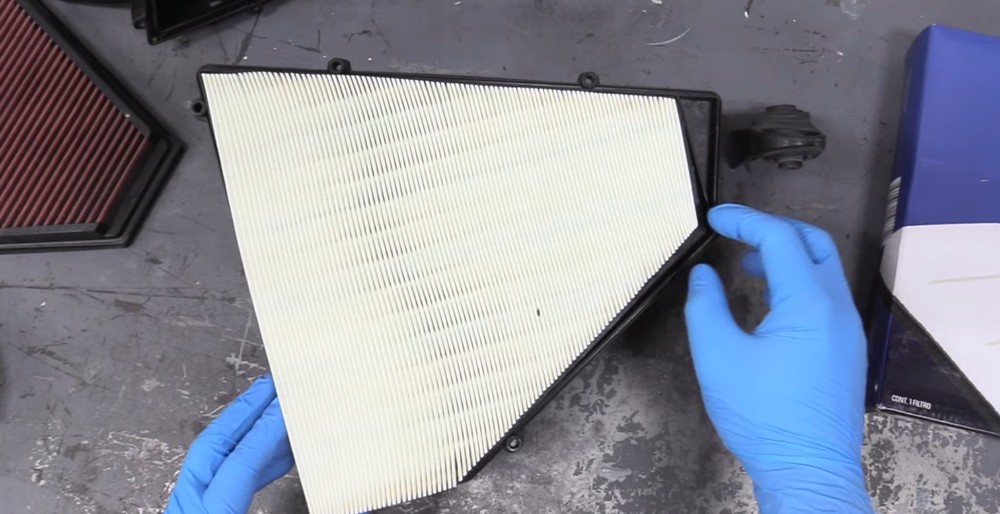Have you ever wondered why your BMW e90 isn’t performing as it should? Maybe it’s not accelerating as quickly, or it’s using more fuel than usual. One often overlooked culprit could be your engine air filter.
This blog post aims to help you locate and replace your engine air filter. We understand that not everyone is a car expert, and sometimes even the simplest tasks can seem daunting. But don’t worry, we’ve got you covered.
We’ll guide you step by step, ensuring you can confidently locate and replace your BMW e90’s engine air filter.
For those who prefer a video instead of text, the below video by Auto Repair Guys will take you through the whole process.
Tools and Equipment Needed for inspection
Before you start, make sure you have the right tools and equipment. You’ll need a new air filter, a 10mm socket, screwdriver, and a clean cloth.
You can purchase a new air filter from any auto parts store or online. Just make sure it’s the correct one for your BMW e90.
Before you begin, it’s important to take some safety precautions. Make sure your car is turned off and parked on a flat surface. Also, remember to let your car cool down if you’ve been driving it. The engine can be hot, and you don’t want to burn yourself.
Locating the Engine Air Filter: Finding the Air Filter Box
Now, let’s get down to business. The air filter is located in a box in the engine compartment.
To find it, open your car’s hood and look for a rectangular plastic box. The air filter box in a BMW e90 is located on the driver’s side of the engine compartment.
It’s a large, black, rectangular box with a tube leading out of it to the grille of your car. This tube is the intake tube, which draws air into the air filter box. Once you’ve located the box, you’re ready to access the air filter.
Access the Air Filter
To access the air filter, you’ll need to remove the cover of the air filter box. But first there might be some cables and plugs that need disconnecting.
The MAF sensor (mass air flow) needs to be unplugged. It lies a few inches deep and is connected to the back side of the air filter box. Use your fingers and a screwdriver to disconnect it.
And the tube – the one that runs air from the middle of the grille into the box – must be disconnected too.
The filter box itself is secured with screws or clips. Use your screwdriver/socket to remove these all around the box, then lift the entire box and carefully take it out.
Once the air filter box is out, you can unscrew its bolts and access the actual air filter.
Removing the Old Air Filter
To remove the old air filter, simply lift it out of the box. Be careful not to let any dirt or debris fall into the box. Once you’ve removed the filter, use your cloth to wipe out the inside of the box, ensuring it’s clean for the new filter.
Take a moment to inspect your old air filter. If it’s clogged with dirt and dust, it’s definitely time for a replacement. A clean filter should be white or off-white. If it’s gray or black, it’s time for a new one.

Installing the New Air Filter
Now, it’s time to install your new air filter. Simply place it in the box where the old one was.
Make sure it’s seated properly and fits snugly in the box.
It’s important to ensure the filter is properly aligned in the box. If it’s not, it won’t filter the air effectively.
Once the filter is in place, secure everything with the screws or clips you removed earlier. Then place the entire air filter box back into the engine bay.
Don’t forget to reconnect the MAF sensor and all tubing and brackets.
Final Checks
Before you close the hood, double-check all your connections. Make sure the air filter box is securely closed and the intake tube is properly connected. A loose connection could allow unfiltered air into your engine, defeating the purpose of your new air filter.
Finally, close your car’s hood securely. Make sure it’s latched properly before you drive your car.
Recognizing a Dirty or Clogged Air Filter
So, how do you know when your air filter needs replacing? There are several signs to look out for. You may notice a decrease in fuel efficiency, or your engine may not run as smoothly as it usually does. In more severe cases, you might even see a check engine light on your dashboard.
According to Air Filter Blaster, some of the symptoms that may indicate a clogged air filter are:
- Dirty Filter: If the air filter looks dark and dirty instead of clean and white, it might need cleaning or replacing.
- Less Mileage: If your car starts using more gas than usual, it could be because of a dirty air filter that makes it burn more fuel.
- Engine Problems: If your car has trouble starting or makes weird noises, the air filter might be dirty, causing issues with the engine.
- Check Engine Light: If the “check engine” light comes on, it could be due to a dirty air filter affecting the engine’s performance.
- Sluggish Performance: If your car feels slow and doesn’t accelerate well, the air filter might be causing it to not get enough air for proper performance.
- Smoke or Flames: If you see black smoke or flames coming out of the exhaust, it could be because the air filter is dirty and causing fuel problems.
- Strong fuel smell: If you notice a strong smell of gasoline, it could be a sign of a dirty air filter causing fuel leaks.
The Vital Role of the Engine Air Filter in a BMW e90
The engine air filter in your BMW e90 plays a crucial role in maintaining the performance and longevity of your vehicle. It’s responsible for filtering out dust, dirt, and other contaminants from the air before it enters your engine. This clean air is essential for the combustion process, which powers your vehicle.
The engine air filter is a key player in your BMW e90’s performance. It ensures that only clean, dust-free air enters your engine. This clean air is mixed with fuel to create the combustion that powers your vehicle.
Without a functioning air filter, dust and dirt can enter your engine, leading to increased wear and tear and decreased performance.






